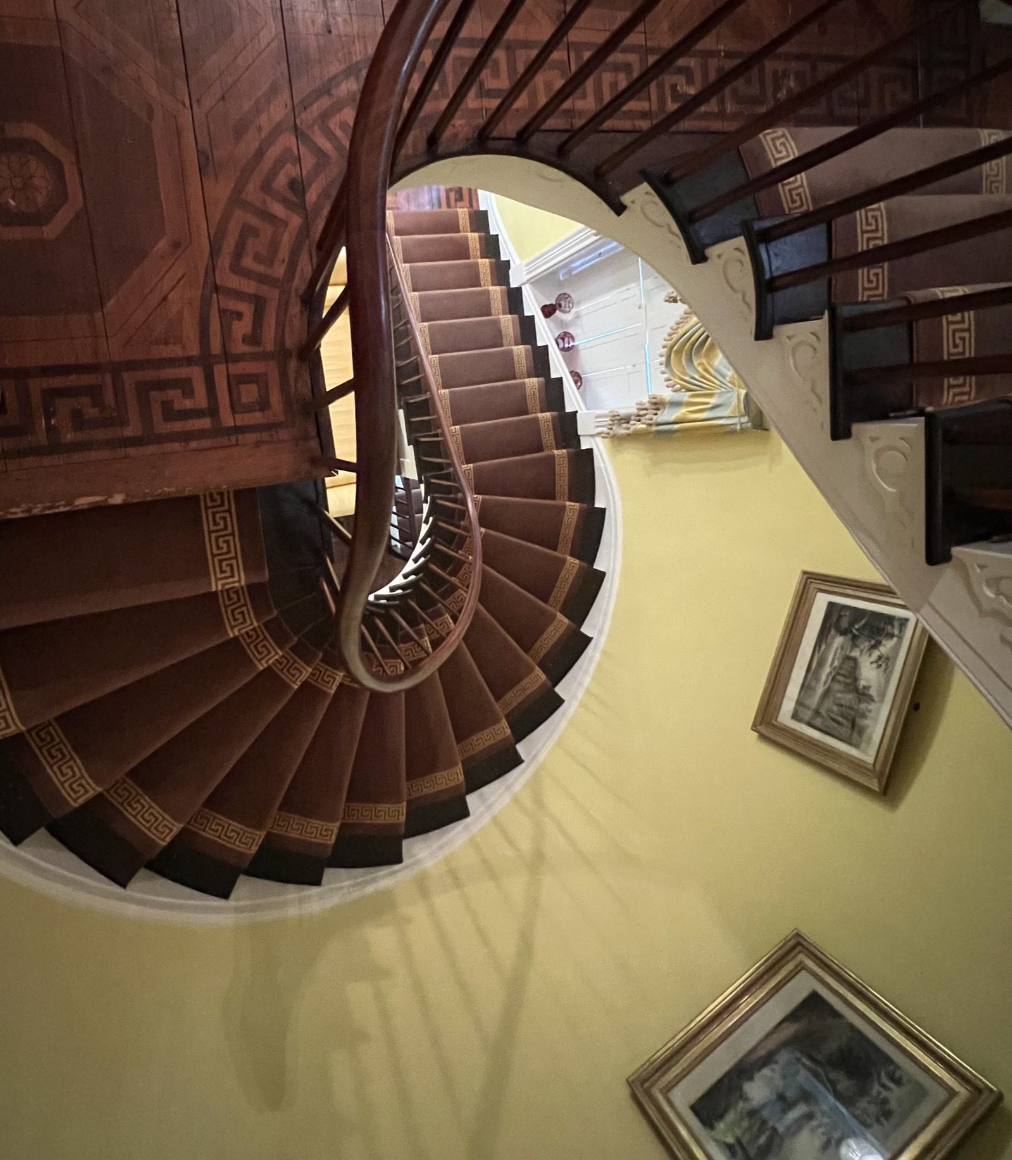Edgewater
DUTCHESS COUNTY, NEW YORK
19th CENTURY AMERICAN CLASSICS
Hidden Gem on the Hudson River
Edgewater’s impressive facade is best appreciated by those who approach by boat, along the Hudson River. Built in 1824, its temple-fronted colonnade ornaments a large house that was made even more impressive by the addition of an enormous octagonal library in 1854. The combination of an octagonal library and classical portico captivated visitors well into the twentieth century—including its last two private owners, Gore Vidal and Richard Hampton Jenrette.
Location: Dutchess County, New York
Date: 1824; Octagon Library addition completed in 1854; Guest House and Pool House, 1998
Owners: Built for Rawlins Lowndes Brown and his wife Margaretta Livingston Brown; Robert Donaldson and his wife Susan Gaston Donaldson (1853); John Jay Chapman and his wife Elizabeth Astor Winthrop Chanler Chapman (1902); Robert Kirby Taylor (1946); Gore Vidal (1950); Richard H. Jenrette (1969); Classical American Homes Preservation Trust (2018).
Builders: Main House attributed to Architect Robert Mills by William Nathaniel Banks; Octagon Library designed by A.J. Davis; Guest House and Pool House by Michael Dwyer
Designations: National Register of Historic Places as a contributing property to the Hudson River Historic District
Edgewater was built for John R. Livingston as a present to his daughter Margaretta on the occasion of her marriage to Captain Rawlins Lowndes Brown of Charleston, South Carolina. It was one of several river-side seats built by the Livingston family in this era, including Montgomery Place, Teviotdale, The Hill, and an eccentrically designed house known as “Old Turtle.”
In 1853, Edgewater was purchased from the Browns by Robert Donaldson, a North Carolina native who moved to New York to pursue a career in business. Thirty-five years earlier, Donaldson had toured the Hudson River Valley and recorded in his private journal he thought it “the consummation of Earthly Bliss to live in one of those palaces, on such a Noble River, under such a Government.”
Donaldson was committed to the house and enlarged it the following year with an octagonal library after designs by Alexander Jackson Davis. Davis also provided designs for two new picturesque gatehouses flanking the entrance to the property. Other surviving early structures include two small frame cottages, which were probably used by domestic servants. Historical records indicate that during the Donaldsons’ ownership of Edgewater, a majority of the servants employed by the family were recent Irish immigrants.
Want to visit Edgewater?
Edgewater is open to the public every third Saturday, April through October. All guests are required to purchase tickets in advance. Tickets are $20 per person. Children under six (6) years of age are free. Tour dates and times may shift due to holidays and special events.
THE HISTORY AND MAKERS OF EDGEWATER
Donaldson, Downing, and Davis
Over the years, Edgewater has been enlarged and improved by some of America’s most important architects. Though the original designer of Edgewater is unknown, William Nathaniel Banks hypothesized in 1982 that it might have been Robert Mills, on the strength of its Doric colonnade facing the Hudson River and Mills’ Charleston connection to Captain Lowndes Brown. Further research is needed to determine whether another, more local, designer might have been involved.
Much clearer is the person responsible for Edgewater’s refurbishment in 1854: Alexander Jackson Davis, whose command of historic styles and inventive, picturesque manner of composition set him apart from his contemporaries and gave the house its present form.
Davis’ plan for the house’s improvements survives in the Avery Library at Columbia University. He also designed two new gatehouses for the property’s entrance, and was likely responsible for the refurbishment of the main house in an updated Greek Revival style.
THE HISTORY AND MAKERS OF EDGEWATER
This was not the first time that Robert Donaldson had worked with Davis, as Davis had designed his former house, Blithewood, as well as its gatehouse. Donaldson was also a sponsor of Davis’s architectural pattern book, Rural Residences.
For its romantic landscape, Donaldson turned to the prominent American landscape designer Andrew Jackson Downing. After years of collaboration, Downing was so impressed by Robert Donaldson’s patronage that he dedicated his own pattern book, Architecture of Country Houses, to him, calling Donaldson an “arbiter elegantium,” or “arbiter of elegance.”
Richard H. Jenrette continued this tradition of hiring talented architects to improve the grounds at Edgewater when he commissioned Michael Dwyer to design a new guest house and pool house in 1997.






